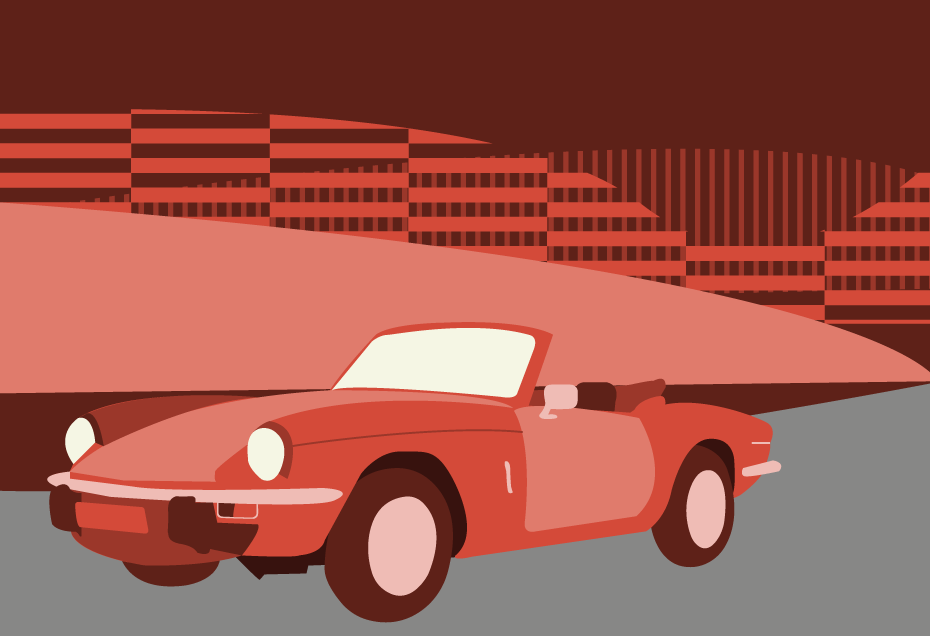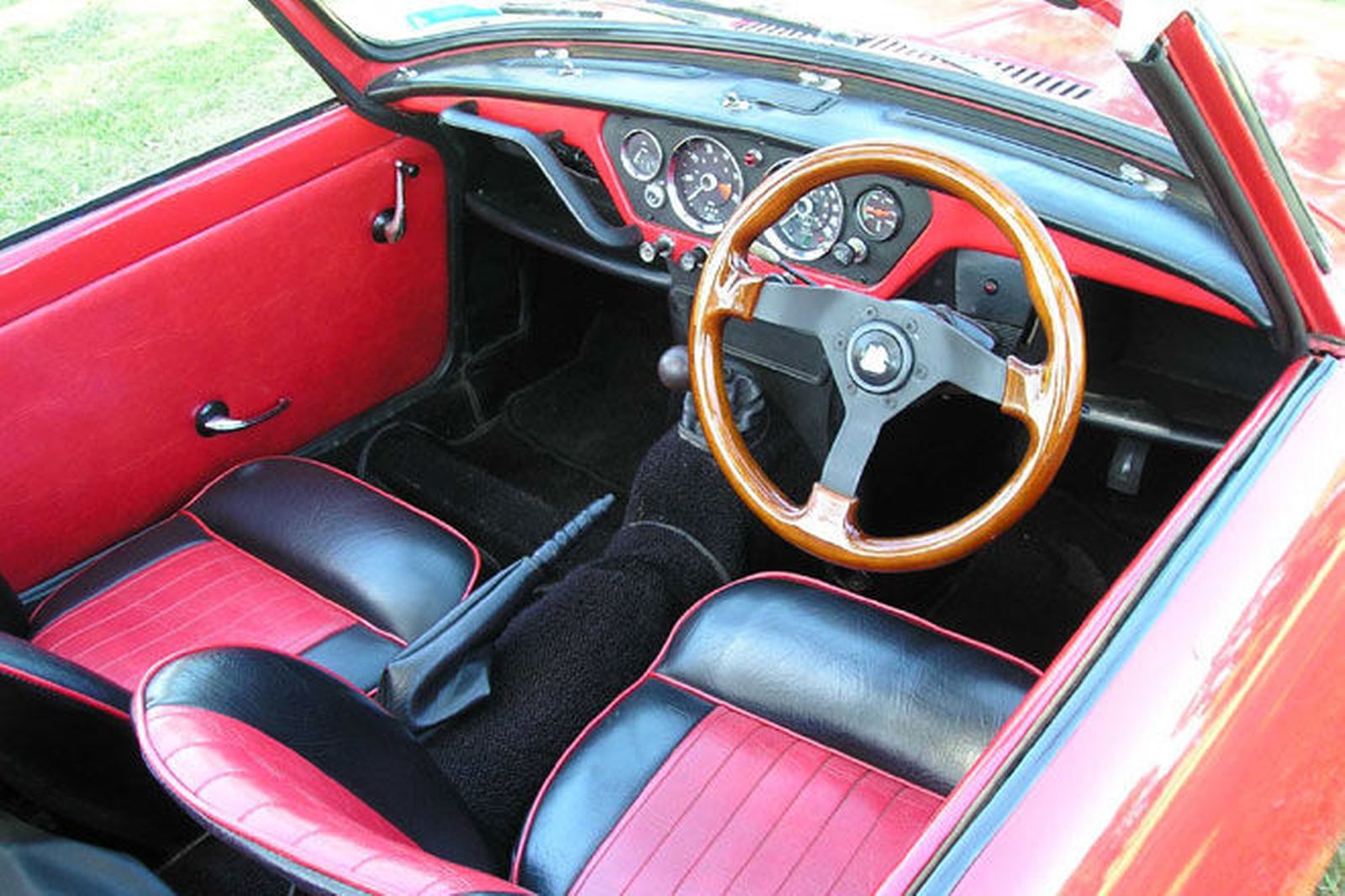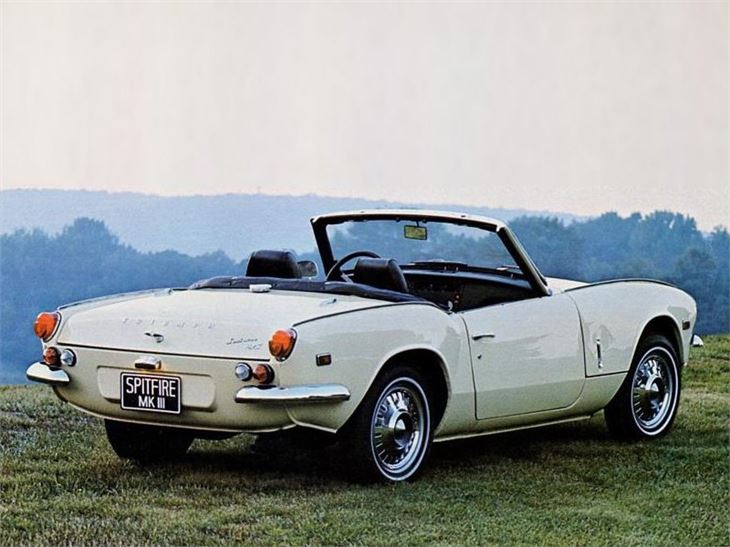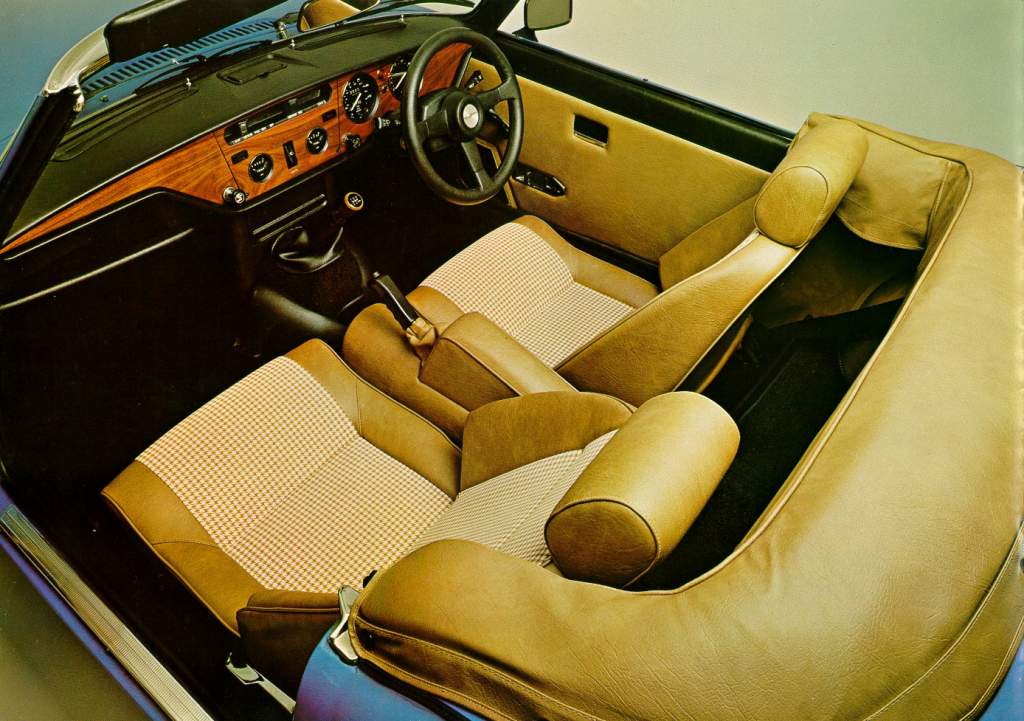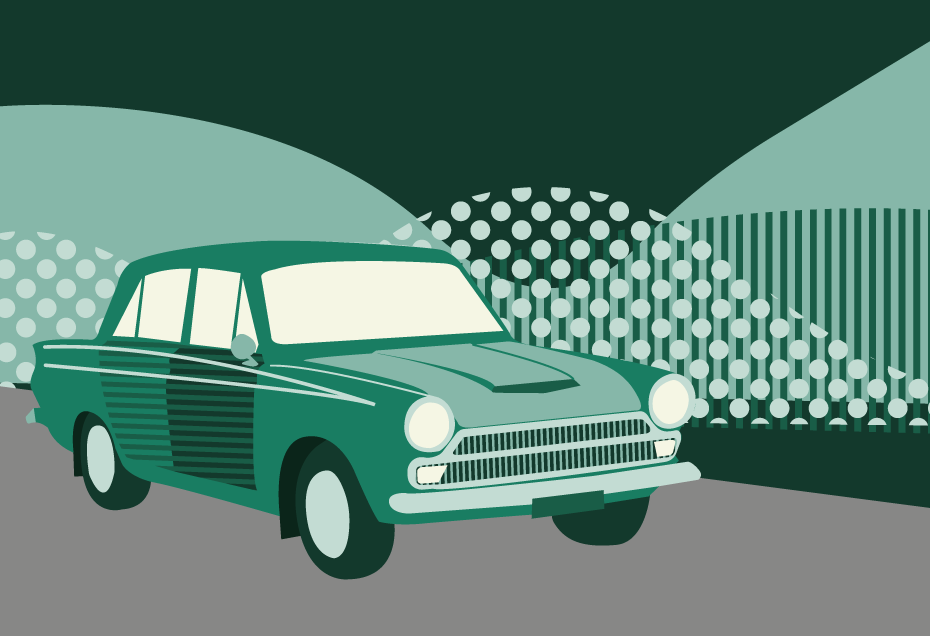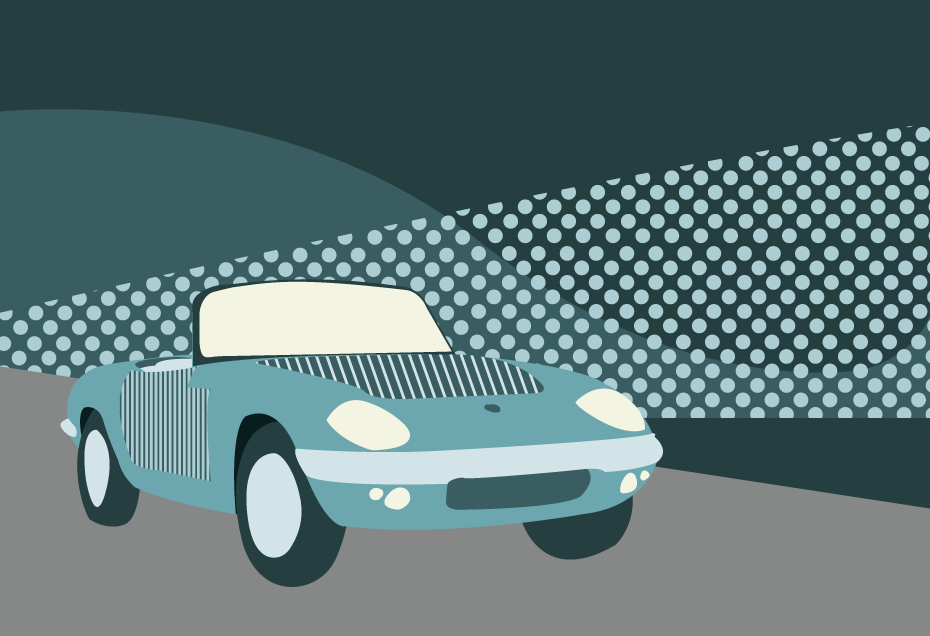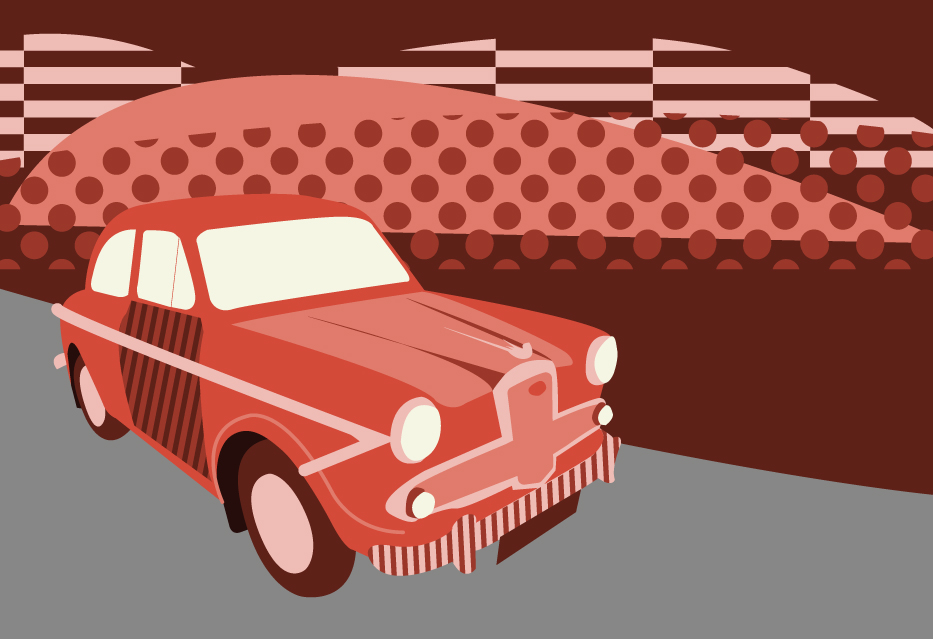A Herald in a party frock, or a great British sports car for the masses?
The Triumph Spitfire pulled off the trick of being both, its pretty Michelotti-designed body periodically tweaked to keep it looking fresh throughout its 18-year production run.
Like its chief rivals, the Sprite and Midget, it represented affordable, wind-in-the-hair motoring with the emphasis on fun over outright performance.
We trace the history of a car that started life as Project Bomb, and became the Spitfire.
The idea for a small Triumph sports car was first mooted as long ago as 1957, when the Herald – known at the time as project Zobo – was still in the early stages of development.
Notes from a Standard-Triumph board meeting show that the Herald should be engineered with a view to “minimum modifications necessary for production as a small sports car for the USA market.”
But the new car didn’t hit the showrooms until five years later, long after the Austin-Healey Sprite, and then the MG Midget, had stolen a march.
When it did, it was an immediate success on both sides of the Atlantic, outselling both the Sprite and Midget and only outsold by the larger MGB, produced over an identical time period.
By the time the last Inca yellow Spitfire rolled off the production line at Canley in August 1980, a total of 314,332 had been made.
Development of the Spitfire
The Spitfire’s journey from drawing board to showroom was long and tortuous, and Project Bomb would almost certainly have failed to ignite had Leyland not taken over the ailing Standard-Triumph company in December 1960.
Midway through the following year, Triumph’s new chief executive Stanley Markland was walking through the factory with technical director Harry Webster when he spotted something lurking under a dust sheet.
What lay beneath was Giovanni Michelotti’s prototype of the future Spitfire, built some time during 1960 but moth-balled because of a lack of funds.
Markland liked what he saw and, with finance now available under Leyland’s ownership, urged Webster to put the car into production.
The frog-eye Sprite had already been in production for two years when Michelotti created the Bomb model, and Triumph dealers in the US were demanding a similar car of their own, smaller and cheaper than the popular TR3 and its rivals like the MGA.
Much of the development work had already been done by Michelotti and Webster who, long before the Leyland takeover, had been hard at work creating the small roadster that was always intended to be based on the Herald’s backbone-style chassis and separate bodyshell.
With an eye on the costs, this was a much cheaper way of producing a competitive sports car than starting from scratch on a unitary design increasingly favoured by manufacturers of the time.
The intention had been to simply shorten the Herald’s platform, and use a tuned version of the Triumph 10’s 948cc engine.
In the event, a similar but entirely new backbone chassis-frame was constructed, 8.5 inches shorter than the Herald’s and minus its side members.
This allowed the car to be much lower than the Herald, with the seats placed at the side of the chassis instead of on top, but it did necessitate the use of strong structural sills.
It also meant, crucially, that the car would be three inches longer than the tiny Sprite, reflecting Webster’s desire for a roomier, more practical roadster.
For the prototype, Herald parts were used liberally to keep costs down, including rack and pinion steering and coil-and-wishbone front suspension with a single transverse-leaf swing axle arrangement at the rear.
This arrangement had been much criticised in the Herald, which was prone to violent oversteer if cornered too hard, and early Spitfires suffered from a similar malaise.
Like the Herald, the Spitfire was to have a front-hinged, one-piece bonnet assembly incorporating the front wings; unlike the Herald, where every panel could be unbolted from the car in isolation, the Spitfire featured a completely welded body to aid rigidity, attached to the chassis by 12 bolts.
From the start, the Spitfire was designed to out-do the Sprite, with wind-up windows, greater legroom, a wider cockpit, stowage space behind the seats, and space for an overdrive unit.
With the undulating, low-slung bodywork complete, the prototype was shipped from Italy to Coventry in the autumn of 1960, and briefly tested before finding its way under that dust sheet as Standard-Triumph flirted with bankruptcy.
Like our illustration of the Triumph Spitfire at the beginning of the article? Download a free high-quality poster version here.
Leyland rescue and full production
That could have been the end of that, but for the intervention of Leyland, hitherto a manufacturer of lorries and busses, as well as the Cromwell and Centurion tanks, and especially Stanley Markland.
Thanks to the enthusiasm of the new boss, Webster lit the fuse to the Bomb, with the final car little changed from the prototype and a mildly tuned, twin-carb version of the 1147cc engine from the Herald providing the power.
Although often assumed to have been named after the World War II fighter plane, Triumph always denied any connection, yet were later happy to place the two together for adverts.
Sales director Donald Stokes is credited with coming up with the name before the car, officially the Spitfire 4 because of its four cylinders, was launched at the London Motor Show in 1962.
A reduction in purchase tax knocked nearly £90 off the price of the newly-launched car, reducing the price to £641, still more than the £587 of the mark II Sprite, but less than the slightly more upmarket MG Midget.
That the Spitfire offered more than either, in terms of performance, space and civility, was not in doubt.
Testing the car in November 1962, Autocar praised a “refined car with a number of advanced features”, offering “appropriately good performance and fuel economy”.
Output from the 1147cc engine was 60 per cent higher than in the Herald, at 63bhp, thanks to go-faster cylinder head, camshaft and manifold.
It was enough to outrun the Sprite and propel the car to 60mph in under 17 seconds and on to 93mph.
Autocar hailed “one of the least expensive genuine 90mph cars”, also capable of producing an eye-catching 35-plus miles per gallon.
Of the suspect roadholding, there was barely a murmur, Autocar declaring it “easy to control” with “a wide safety margin for the over-enthusiastic”, although it was “quick to slide on wet roads”.
Front disc brakes brought the Spitfire to a rapid stop, and the car inherited its London taxi-beating, super-compact turning circle from the Herald, making it easy to make improbable escapes from tight parking spaces.
A generally spartan interior nevertheless included a trip meter in the speedometer, supportive bucket seats, an ashtray and padded fascia top.
In late 1963, customers could have centre-lock wire wheels and optional overdrive on third and fourth gears, and a removable hard-top was offered at extra cost.
“A travelling motor-race”
Motor Sport magazine was very taken by the “attractively-styled Spitfire 4, which attracts a very fair share of admiring glances”, describing it as “a very welcome addition to the ranks of the long-neglected ‘1100’ sports cars”.
“The Michelotti-styled body, flat and shapely, is not only amongst the most pleasing of present-day small sports cars but it has the luxury of wind-up glass windows instead of detachable side screens and a good, rigid hood, which blends well with the lines of the body,” wrote Motor Sport’s legendary editor William Boddy.
“The little 1147cc Triumph is purely a sports car, lively, fun to drive, making appropriate noises – a travelling motor-race – and sticking well to the road. While accelerating the engine has a quite loud, deep exhaust note but I do not think it would give offence to anyone; at other times the engine is reasonably quiet, save for some exhaust roar and the sucking of the SUs.”
Boddy said the car “responds well to enthusiastic driving”, and managed to get to 60mph in 15.6 seconds – was there a following wind…?
He predicted that, assuming it stands up to hard driving, the Spitfire “should soon be a best-seller in the small sports car class”, and he wasn’t wrong.
More than 45,000 Spitfire 4s were sold, with numbers increasing year on year in America before the arrival of a tweaked mark 2 in 1965.
Keeping ahead of the Spridgets
By 1964, the Sprite and Midget had acquired wind-up windows, external handles and locks, and a proper bootlid – all of which the Spitfire had all along, of course.
But Triumph weren’t resting on their laurels, and responded with a beefed-up mark 2, with more power, a restyled interior and some minor changes to the exterior trim.
Most significantly, the car gained an extra four horsepower thanks to a hotter camshaft and revised intake and exhaust manifolds, taking power up to 67bhp compared with the Spridget’s 59bhp.
Inside, carpets replaced rubber mats, the previously painted metal dashboard received a vinyl covering, and the already-supportive seats were improved, though a heater remained an optional extra.
The only changes to the exterior were a new grille and badges.
Triumph claimed an improved top speed of 96mph, and a quicker sprint to 60mph of 14.8 seconds.
As far back as 1963, Michelotti had been commissioned to design a GT version of the Spitfire, to be designated the Spitfire GT4, but the extra weight proved too much for the pulling power of the 1147cc engine, and the project was shelved.
However, the sleek, aerodynamic coupe styling was adopted by the Triumph racing programme, with a fibreglass copy of the fastback grafted on to the Spitfire to save weight.
The results were impressive, the Spitfire finishing 13th overall at Le Mans in 1965, and first in the 1.15 litre / 70 cui GT Class, beating the MG Midgets.
This success led to the project’s revival, with the 1147cc engine replaced by the more powerful 1998cc Triumph inline 6 used in the Herald-based Vitesse, necessitating a distinctive bonnet bulge.
Finally launched in 1966, but with the Spitfire name dropped in favour of GT6 to emphasise its extra power lest anyone think this was just a Spitfire with a roof.
The GT6, which shared tooling with the Spitfire, thus made each model more financially viable than they would have been in isolation, helping to secure the future of the roadster.
New look and more power
With the Spridgets gaining more power in 1966, Triumph again responded with the much-improved mark 3 the following year, with a new look to the front end and the engine bored out to 1296cc, providing a healthy 75bhp.
The most obvious exterior change was the “bone in the mouth” front bumper, raised to comply with American safety regulations, while the rear lost the over-riders from the bumpers but gained reversing lights as standard.
A permanently attached, folding soft-top, replacing the plug-in frame with separate canvas, assuaged grumbles in the motoring press about the “build it yourself” cover, while inside a new wood veneer dash added a touch of class.
The mark 3 was the fastest Spitfire to date, achieving 60mph in 13.4 seconds and a top speed somewhere between 95mph and 100mph, depending on which report you read.
It got larger front disc brakes and a beefier clutch to help cope with the extra power.
In September 1967, American magazine Road & Track tested a Spitfire alongside an MG Midget, with neither declared a clear winner.
“Whichever one the buyer chooses, he is assured of many miles of motoring pleasure in the great sports car tradition,” it said. “They’re good cars, both of them. You can’t go wrong.
“They both meet the most important all-round requirement for a sports car – responsiveness. If a sports car is anything, it is responsive – with steering that is quick and accurate, clutch action that is crisp, a gearbox with positive feel, brakes that can be used hard and often.
“All out brute performance is far less important than the feeling that you are in complete control and directing the machine rather than holding on and trying not to do anything foolish.
“It isn’t easy to think of two cars that fulfill all the requirements for the basic sports car any better than the MG Midget and the Triumph Spitfire.”
The Spitfire was still quicker than the Spridgets, both to 60mph and flat out, but that abrupt oversteer under hard cornering was still noticeable.
Road & Track considered the MG “better assembled”, with fewer rattles, and with a smoother engine, but its diminutive size – while great for accurate handling – was an issue for anyone above average height.
“The driver compartment is so small as to be barely satisfactory for a 5ft 9in driver, and all but impossible for any driver much over 6ft tall,” said the magazine. “The Spitfire is much more satisfactory in this respect.”
Like our illustration of the Triumph Spitfire at the beginning of the article?
Download a free high-quality poster version here.
British Leyland, and a new rear end
In January, 1968, Leyland Motors – the owners of Triumph-Standard – took over British Motor Holdings, which not only included Jaguar and Daimler but also Austin, Morris and MG.
The Spitfire was still competing head-on with the Sprite and Midget, but all three cars were now owned by the same company, now called British Leyland.
But with all three still selling well, they retained their own distinct brand identities, and their own band of devoted followers.
And while the Sprite disappeared in 1971, and the Midget saw very little change until 1974, the Spitfire was given a new lease of life with the arrival of the redesigned mark IV in 1970 (Roman numerals were used to distinguish from the original Spitfire 4).
The re-skin was once again undertaken by Michelotti, who gave the Spitfire a completely new, cut-off rear end, bringing its styling in line with the Stag and Triumph 2000.
At the front, a new bonnet pressing tidied things up, removing the weld lines on top of the wings, while the chrome headlamp surrounds bit the dust.
Slightly flared wheel arches were added, along with flush-fitting door handles, while inside a full-width dashboard shared with the GT6 was provided, with instruments shifted from the centre to sit in front of the driver.
Finally, a heater came as standard, as did sun visors and seat belts, while synchromesh was now available on first gear.
For the mark IV the problematic rear suspension was at last addressed to prevent the rear wheels from “tucking in” and causing that dramatic oversteer.
Where the transverse rear leaf spring assembly was previously bolted solidly to the top of the differential casing, just the bottom leaf now remained fixed, leaving the others free to pivot around a central axis.
This tamed the sudden, and terrifying, jacking on hard corners that had previously seen Spitfires – and Heralds – dramatically leave the road with little warning.
The 1298cc engine was retained, and in time for the January edition of Motor Sport, William Boddy was again at the wheel to assess the new Spitfire.
He described an “adequately fast” sports car that was “enjoyable to drive” and “drew many interested glances” while out on the road.
“I like this little Triumph ‘toy racer’,” he wrote. “In action, the little car is great fun. It handles well and clings on in the wet.
“Our performance-car specialist, JW, says Spridgets can still run rings round the Spitfire but for road use I regard the Triumph as more of a motor car, as it has larger dimensions, but fits very nicely between these really small BLMC sports models and the obviously more potent and more purposeful MGB and Triumph TR6.
“The Triumph Spitfire in its latest form is a fascinating little car.”
The Spitfire 1500
The final iteration of the Spitfire arrived in December 1974 in the shape of the 1500, although the 1493cc engine had been introduced to the US a year earlier (with a single Zenith-Stromberg carb) in a bid to boost performance in the face of falling power output to meet emissions regulations.
Even then, the US version was restricted to just 57bhp, but in other markets, including the UK, power output remained acceptable at 71bhp.
The new engine, shared by the MG Midget, was mated to a Marina gearbox, and provided a useful increase in torque from 75lb ft to 82lb ft.
That this was delivered at only 3000rpm instead of 4000rpm made it much more flexible and driveable in traffic.
Testing in March, 1975, Autocar said the Spitfire, now a genuine 100mph car, described “a very civilised little sports car” that “still seems thoroughly up to date”.
“It provides a lot of fun and has a high safety factor, to which the extra power now available adds rather than detracts,” it said.
“It is to be hoped that production will long continue; in this revitalized form the Spitfire 1500 has a lot to offer which no other car quite matches.”
Take that, Midget…
Motor Sport magazine similarly marvelled at how a car so seemingly long in the tooth had kept “pace with the times in terms of driving pleasure and comfort while retaining that sadly rarer facility for fully open-air motoring”.
Moreover, while the Midget and MGB had switched to American-enforced rubber bumpers – as had the US Spitfire – the Triumph had retained its prettier chrome for the UK market.
The magazine achieved a brisk 0-60mph time of 11.3 seconds, and described the car as “now satisfyingly nimble”.
It said handling and roadholding had improved considerably once more, thanks to a wider rear track.
“This Spitfire is now very stable and predictable, that inclination for the rear wheels to touch their toes has disappeared completely; there seems to be less roll and the ride is better,” it added. “The steering is delightful by any standards.
“Long in the tooth or not, the Spitfire 1500 remains a welcome alternative in a world of rather boring saloon cars, while its performance/economy ratio makes considerable sense.”
The end of the road
The Spitfire changed little for the remaining years of its life, with only detail tweaks like cloth upholstery, column stalks from a TR7, an electric screen washer, and hazard flashers marking the passage of time.
British Leyland had planned to phase the car out in 1982, but ever-stricter emissions regulations in California proved too much for the old Triumph 1500 engine, halving production to uneconomical levels for a car that shared no common parts with any other BL model since the demise of the GT6 in 1973.
With BL’s finances less than healthy, and what money there was focused on the TR7 and new products like the Metro, the Spitfire was retired.
That last Inca yellow car was never sold, and resides at the British Motor Museum at Gaydon.


